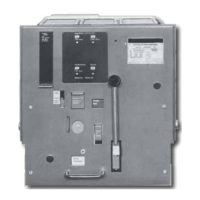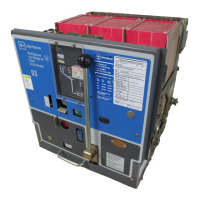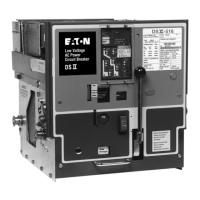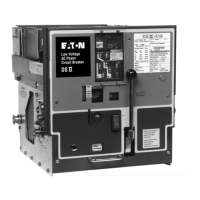65
Instruction Booklet IB 33-790-1J
Effective November 2010
Instructions for Low Voltage Power
Circuit Breakers Types DS and DSL
EATON CORPORATION www.eaton.com
Fig. 69 Overcurrent Trip Switch.
Three contact arrangements are available as standard:
(1) two normally open, (2) two normally closed, or (3) one
normally open and one normally closed contact. These
are independently wired to secondary disconnect con-
tacts at the rear of the breaker unit. Some special units
may have one or two additional contacts.
The device is latch-type and must be manually reset by
means of a pushbutton on the breaker front panel.
Also
available is an electric reset for remote operation. Figures
69 and 70 illustrate an electric reset device.
8.7.3 High Load Switch (available with Amptector l-A only)
This is a self-resetting solid-state device which picks up
on an overload condition at a lower pick-up value than the
breaker overload trip setting of the Amptector trip unit. Its
function is to give advance notice of an overload condi-
tion before the breaker trips. See Figure 71.
The pi
ck-up point is adjustable from 60% to 100% of the
Amptector trip long delay pick-up setting. The non-adjust-
able time delay of 60 seconds requires that the pick-up cur-
rent be maintained for that interval to cause the relay
contact to operate. If the load current falls below the pick-up
point, the timing resets in about a second. The relay has
one normally open and one normally closed contact with a
common connection. Its built-in power supply requires a
reliable sinusoidal source of either 120 or 240 volts AC.
Fig. 70 Overcurrent Trip Switch Operation.
Fig. 71 High Load Switch.

